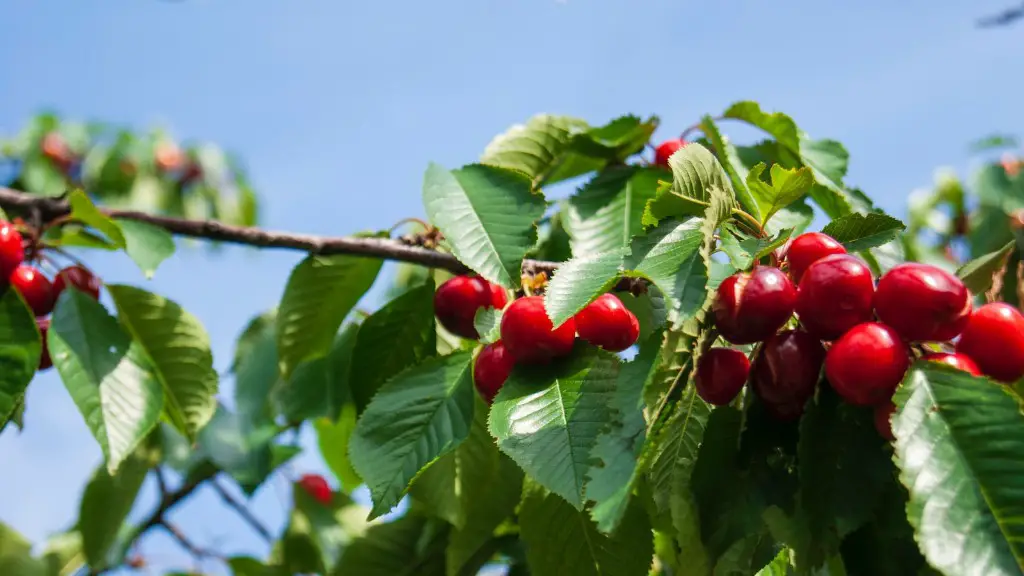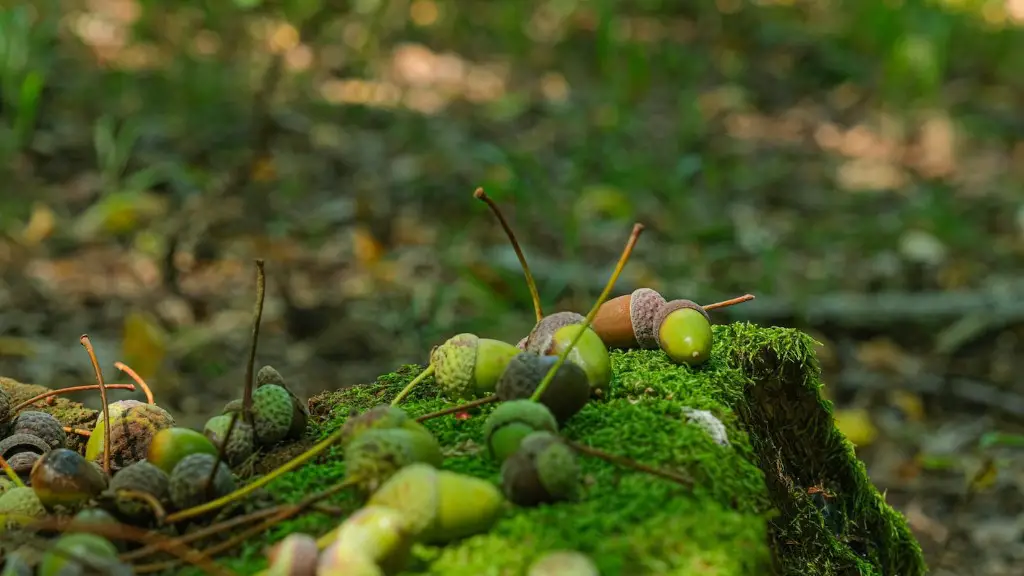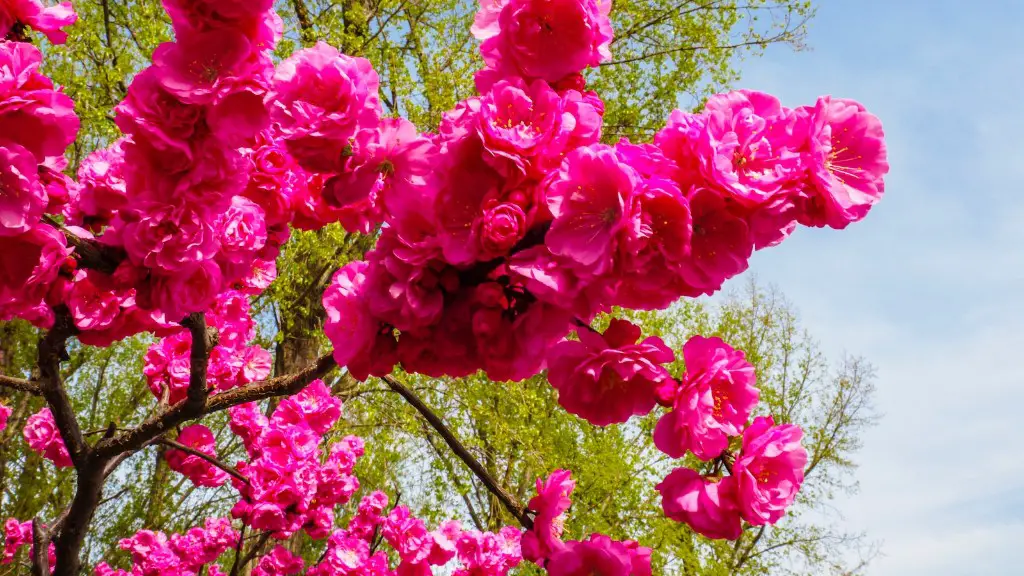Is This a Cherry Tree?
When one looks out into their garden, they may see a variety of trees, but how do they know what’s a cherry tree and what’s not? Determining if a tree is a cherry tree can be difficult, but there are some identifying characteristics one should look for. Let’s take a closer look.
All cherry trees share several characteristics regardless of their size, regardless of their color. To start, cherry trees have branches that are light and thin, and the leaves tend to be delicate and small. All cherry trees have flowers that have five petals and can range from dark pink to white. Furthermore, cherry trees produce small, dark red fruit.
Cherry trees grow best in weather that is moderate to mild, so it may be a good idea to research the climate before planting a cherry tree. Depending on the type of cherry tree, they may require quite a bit of maintenance. Wispy, thin branches tend to need more support in the case of stormy weather. On the other hand, some cherry varieties are bred to be resistant to disease and pests, requiring less maintenance.
Cherry trees can be grown in large or small backyard gardens. Before planting a cherry tree, consider the amount of space available and the design of the garden. Some cherry trees reach a mature height anywhere from 10-25 or even some up to 60 feet tall. While a cherry tree may be a small size at the time of purchase, be aware that it may reach its full potential within a few years.
In addition to size, soil is also a very important factor. A cherry tree’s roots need soil with a mixture of clay, loam, and sand for good water retention and drainage. The soil should also be slightly acidic or neutral. If not, adding organic matter like compost or manure can make it suitable.
Experts suggest that cherry trees should be planted during the early days of spring. Cherry trees can generally tolerate colder weather than some other fruit trees, therefore they are suited to areas with cooler climates. After planting, dedicated gardeners would need to water regularly and use fertilizer to maintain their cherry tree.
Therefore, the answer to the question “Is this a cherry tree?” can be answered by looking for several of the characteristics listed above. Spotting a cherry tree is something anyone can do with a keen attention to detail.
Harvesting Cherries
Harvesting cherries is usually done by hand in order to minimize damage to the fruit. When a cherry is ripe, it will just fall off the tree with a gentle tug. It’s best to wear gloves when picking cherries to avoid staining your hands. It is important to give the cherries a quick rinse before eating or cooking with them.
When harvesting cherries, they can either be eaten fresh or they can be preserved using various methods. For best results, use cherries that are very juicy and sweet. If the cherries are slightly tart, they can be used as a substitute for cranberries in some recipes or be used as a topping for ice cream or waffles.
When preserving cherries, the most common methods are freezing, canning, pickling, and drying. Freezing cherries preserves their flavor and texture, with the caveat that the frozen cherries will weep moisture when defrosted. Canning cherries involves stewing them in a slightly sweet syrup, or in some recipes, tart cherry juice. Drying cherries can be done in the sun, or with a food dehydrator. Pickling cherries is a relatively new concept, but an increasingly popular method of preserving the flavor more strongly.
When it comes to harvesting a cherry tree, one must be diligent and aware not to over-harvest. Over-harvesting will result in fewer fruit in future harvests. It’s best to wait until the cherries are fully ripe and ready to harvest before you start picking.
Pollination
Another important factor to understand, when growing cherries, is the pollination method. Out of all the trees available, cherry trees have some of the most special pollination requirements. Many cherry trees are self-pollinating, meaning that the same tree produces both male and female flowers, and pollinates itself. Other varieties, however, do require another tree to cross-pollinate.
If you are planning on planting a cherry tree in your garden, it’s important to research which varieties can cross-pollinate with the one you’re particularly interested in. When considering pollination, it’s important to also understand the need for bees in the process. Bees are commonly responsible for the transfer of pollen, so one should be sure to encourage a healthy bee population in their garden.
When it comes to pollination, timing is also a key factor. As mentioned, cherry trees blossom in the early days of spring. If a garden has a particular variety of cherry tree that needs to be cross-pollinated, they should grow different kinds of cherry trees nearby so they can cross-pollinate each other.
In conclusion, the flowers are a giveaway when it comes to determining if the tree by your house is a cherry tree or not. But to guarantee success, recognize the tree’s specific pollinating needs and be sure to properly harvest the cherries in order to ensure future fruit production.
Propagating Cherry Trees
Propagating cherry trees from cuttings is the simplest route to planting a new cherry tree. Taking softwood cuttings of a cherry tree is the best way to start. However, semi-hard or hardwood cuttings can also be successful.
When taking a cutting from a cherry tree, select a healthy branch that is a few feet long and make sure there are at least 3-5 buds on the branch. Cut off the bottom of the branch just below a bud, and if the wood is too hard, it is best to make a slanted cut to make sure the cutting properly absorbs water. Once the cutting is taken, it can be planted in a pot filled with a light potting mix.
Once the cutting is planted, a gentle routine of soil moisture is required. Soak the cutting in water for 24 hours and then let the top soil layer dry out before watering again. Cool temperatures are ideal for cuttings, as warm temperatures could lead to drying out and wilting of the cutting.
When taking a cutting from a cherry tree, it’s best to wait for early fall for the best results. By then, the tree sap has been reduced and the wood is at its most solid state, which helps with rooting. The cutting should be at least 18 inches in length and kept in a warm place. The cutting should thereafter be watered regularly and left to take root.
When a cutting is planted, it generally takes a few years for it to produce fruit. Studies show that the first harvest from a grafted tree is generally faster than the first harvest from a propagated tree. This can take anywhere from 3-5 years depending on the tree. Therefore, one must be patient when growing a cherry tree from a cutting, but it’s a great way to propagate a variety of cherry tree for a long time.
Pruning Cherry Trees
Pruning is essential to a cherry tree’s health and should be done on a regular basis. By pruning a cherry tree, it will become more vigorous and its branches will be less prone to breaking in high winds or a storm. Pruning a cherry tree should be done around mid-winter when the tree is dormant. It is also important to wait until after all the leaves have fallen off the tree, so that it is easier to spot any dead or decaying leaves, branches, or twigs.
When pruning a cherry tree, one should prune off any dead, diseased, or damaged wood as well as any branches that are overcrowding the tree. Furthermore, remove any water sprouts that have grown and cross branches as they grow too close to each other. Pruning should be done in a way that unifies the tree’s natural shape. When removing branches, ensure that there is good cut near the branch collar in order to help the wound heal quickly.
It is important to not drastically prune the tree, as this can shock the tree and leave it with inadequate leaves for photosynthesis. Furthermore, pruning a cherry tree too much can overexpose the fruit to the sun and make them susceptible to sunburn. Finally, when pruning a cherry tree, ensure that all tools are sterilized between uses to ensure any disease of the tree is kept to a minimal.
Diseases of Cherry Trees
Unfortunately, cherry trees can be affected by several types of diseases, including bacterial, fungal, and insect-related diseases. The most common disease of cherry trees is bacterial canker, which appears as a sunken canker on the bark. The most common symptom is wilting of the leaves and brown spots on the fruit. Other bacterial diseases include bacterial blight and bacterial spot, which appear as white spots on leaves and red spots on fruit, respectively.
Fungal diseases are also a common occurrence on cherry trees. Powdery mildew appears as white powdery substance on leaves and can stunt the growth of cherry trees. Leaf spot is another common fungal disease, appearing as brown spots on the leaves and is most problematic for newly planted cherry trees. Finally, Botrytis rot is a type of fungal rot that affects the fruit of the tree, causing them to rot on the branch.
Insect-related diseases are also common, with the most common being aphids. Aphids appear as small bugs that feed on the leaves and excrete a sticky substance known as honeydew, which can lead to the development of sooty mold. As well as aphids, caterpillars can also be a problem. Cherry tree caterpillars feed on the fruit of the cherry tree, leaving holes in the fruit.
Learning how to recognize and diagnose the diseases of cherry trees is important in order to prevent major damage to the tree. There are many organic treatments for cherry diseases, such as neem oil and baking soda, as well as fungicides, insecticides, and other chemicals. The best way to manage a cherry tree’s diseases is to keep a close eye on it and take action as soon as any signs are visible.




